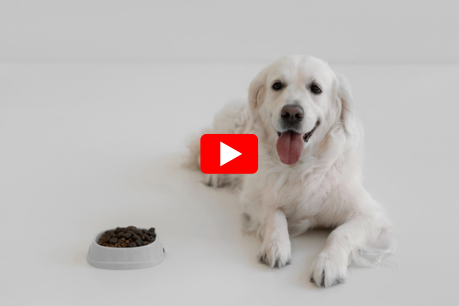Cancerous Skin Tags On Dogs Images: Symptoms, Risks & Vet Advice
As pet parents, we want nothing but the best for our furry companions. When unusual growths or lumps appear on your dog’s skin, it can be alarming and rightly so.
While many skin growths on dogs are benign, some can be cancerous and require immediate veterinary attention.
Cancerous skin tags on dogs may appear as irregular, discolored, or fast-growing lumps. Images help identify signs early. Always consult a vet for diagnosis.
In this comprehensive guide, we’ll explore everything you need to know about cancerous skin tags on dogs, how to identify them with images, when to seek veterinary care, and how to differentiate them from harmless bumps.
What Are Skin Tags on Dogs?
Skin tags in dogs are small, soft, benign growths made of skin tissue. They typically appear as hanging or raised bumps and are often flesh-colored.
These growths are usually painless and occur naturally as dogs age, especially in areas where the skin rubs together.
Common spots include the neck, chest, armpits, and around the face. Though most skin tags are harmless, it’s important to keep an eye on them for any changes in size, color, or texture.
What Do Cancerous Skin Tags on Dogs Look Like?
Not all skin tags are as innocent as they seem. Some growths can be cancerous or may actually be early signs of a tumor.
Cancerous skin tags on dogs often look different from harmless ones. They may grow quickly, develop irregular shapes, or change colors. Some may bleed, ooze, or become painful to the touch. Instead of being soft, these tags might feel hard or crusty.
If you notice any unusual changes in your dog’s skin growths, it’s crucial to have them examined by a veterinarian immediately.
Cancerous Skin Tags on Dogs: Image Descriptions
When searching for “cancerous skin tags on dogs images,” you’ll come across photos that showcase a variety of appearances.
These images often depict lumps that are dark in color, have uneven edges, or look ulcerated. You might see growths that bleed, ooze, or have a crusty surface.
Some cancerous tags may change colors, ranging from black and red to purple, and they tend to grow rapidly. While images can give you a general idea, remember that they’re no substitute for a professional diagnosis.
Types of Skin Cancers in Dogs Mistaken for Skin Tags
Some types of skin cancer in dogs closely resemble skin tags in their early stages, making them tricky to identify without professional help.
Mast Cell Tumors (MCTs)
-
Can appear as small, raised lumps or nodules.
-
Often red, itchy, and may ulcerate.
-
One of the most common skin cancers in dogs.
Melanomas
-
Typically dark-pigmented growths.
-
Found on the skin, lips, or mouth.
-
May be benign or malignant.
Squamous Cell Carcinoma
-
Appears as firm, raised, and often ulcerated masses.
-
Common in sun-exposed areas like the belly or ears.
Fibrosarcomas
-
Firm, painless masses beneath the skin.
-
Grow slowly but can become large and invasive.
Causes and Risk Factors for Cancerous Growths in Dogs
The development of cancerous skin tags and tumors in dogs can be influenced by several factors. Genetics play a major role, with certain breeds like Boxers, Golden Retrievers, and Scottish Terriers being more susceptible.
Age is another risk factor, as older dogs tend to develop more growths. Excessive sun exposure can lead to skin cancers, especially in dogs with thin or light-colored coats.
Obesity and chronic irritation, such as from a poorly fitting collar, can also increase the chances of abnormal skin growths.
How to Examine Your Dog’s Skin at Home
Regular skin checks at home can help you detect issues before they become serious. Choose a well-lit area and gently run your hands over your dog’s entire body, paying extra attention to common trouble spots like the neck, belly, armpits, and groin.
Look for new lumps or changes in existing growths. Take note of any alterations in size, color, texture, or if a lump seems painful. For suspicious bumps, consider taking clear photos to track changes over time and share them with your vet.
When to See a Veterinarian
While many skin tags are harmless, certain warning signs should prompt an immediate vet visit. These include a rapid increase in size, bleeding or oozing, sudden changes in color or texture, persistent itchiness, or multiple new growths appearing at once.
Pain or discomfort when the area is touched is also a red flag. A veterinarian can perform tests to determine whether a growth is benign or cancerous and recommend appropriate treatment if necessary.
Diagnosis of Cancerous Skin Tags in Dogs
To accurately diagnose a cancerous skin tag, a veterinarian will typically start with a physical examination. In many cases, they’ll perform a fine needle aspiration (FNA) to collect cells for microscopic analysis.
If the results are inconclusive or if the growth seems suspicious, a biopsy might be recommended. This involves removing a small tissue sample for detailed examination.
Histopathology, which involves studying the tissue at a microscopic level, remains the most definitive method for identifying skin cancer in dogs.
Treatment Options for Cancerous Skin Tags
Treatment for cancerous skin tags depends on the growth’s size, location, and type. The most common approach is surgical removal, especially for localized growths.
In some cases, cryosurgery (freezing the growth) or laser surgery may be used. If the tumor is inoperable or has spread, radiation therapy and chemotherapy may be considered.
Your veterinarian will help determine the best course of action based on your dog’s specific condition and overall health.
Can You Prevent Skin Tumors in Dogs?
Although it’s not possible to prevent every case of canine skin cancer, there are steps you can take to reduce the risk. Regular veterinary checkups can help detect problems early.
Inspect your dog’s skin at home for new or changing lumps. Protect your dog from excessive sun exposure, particularly if they have light-colored or thin fur.
Maintaining a healthy weight and minimizing exposure to environmental toxins or irritants can also help keep your dog’s skin healthy and reduce the risk of abnormal growths.
Final Thoughts
Your dog’s health and comfort should always be a priority. While most skin tags are harmless, it’s essential to be vigilant and aware of any changes in your dog’s skin.
Knowing what cancerous skin tags look like, and understanding the warning signs, allows you to act quickly if something seems off.
Regular checkups, skin inspections at home, and prompt veterinary visits for suspicious growths are the best ways to protect your pet. Remember images can be helpful for comparison but should never replace professional care.
References Link
Skin Tumors in Dogs – https://www.merckvetmanual.com/dog-owners/skin-disorders-of-dogs/tumors-of-the-skin-in-dogs
Skin Cancer in Dogs – https://www.petmd.com/dog/conditions/cancer/c_dg_hemangiosarcoma_skin
Dog Skin Cancer Types, Signs, and Treatments – https://www.webmd.com/pets/dogs/dogs-and-skin-cancer



